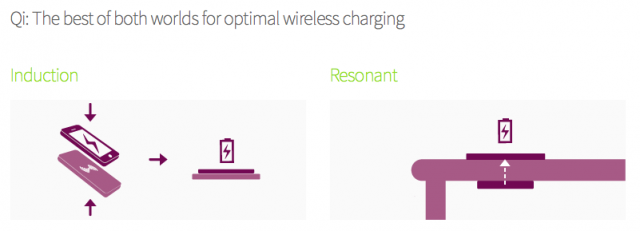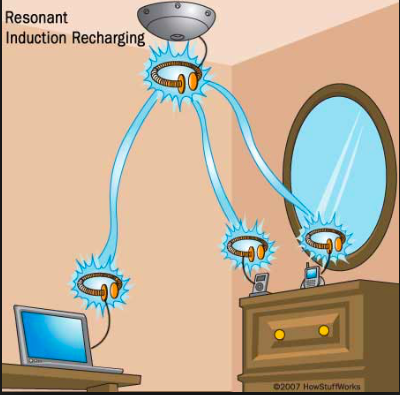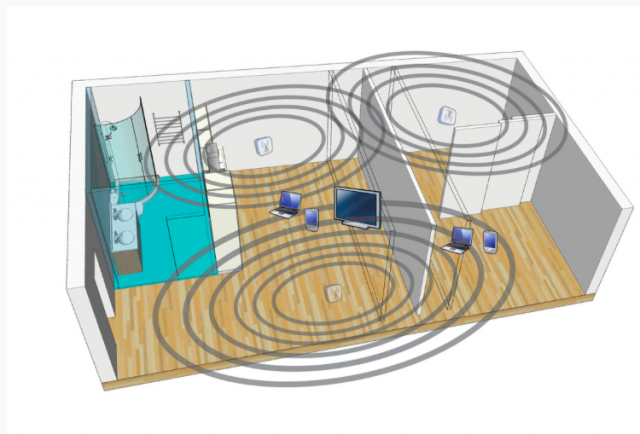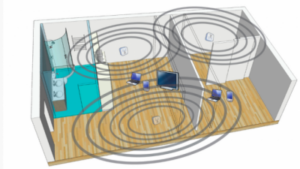Fresh into our new millennium (umm, that’s the next thousand years) we may finally be on the cusp of cutting the last cord. The power cable that is, at least to our most prevalent devices like smartphones and wearables, so says a new report from Navigate Research. It claims high growth in the nascent wireless power market with Inductive Coupling leading the technology pack, but perhaps not for long.

 Remarkably the research consultancy reports 2015 wireless power integration in smartphones is at a whopping “plus 100M units” including the popular Samsung Galaxy S and LG Optimus series, plus a host of other household name brand Android devices from HTC, Google, and Sony.(Here’s a current list of devices from AndroidCentral.com). And while all these models offer the compelling ability to charge wirelessly, Navigant says actual adoption (use) of the technology that eliminates that pesky cord, is quite low. But that is about to change, according to the group.
Remarkably the research consultancy reports 2015 wireless power integration in smartphones is at a whopping “plus 100M units” including the popular Samsung Galaxy S and LG Optimus series, plus a host of other household name brand Android devices from HTC, Google, and Sony.(Here’s a current list of devices from AndroidCentral.com). And while all these models offer the compelling ability to charge wirelessly, Navigant says actual adoption (use) of the technology that eliminates that pesky cord, is quite low. But that is about to change, according to the group.
By the global revenue numbers the wireless power technology market will grow from just $1.3B this year to just shy of $18B ($17.9B) mid-way into the next decade (2024), at least according to the newest research report “Wireless Power” from Navigant Research. This is good news for groups like the Wireless Power Consortium – backers of the popular QI wireless charging technology that boasts 200 companies supporting its standard, 833 shipping products and technology that supports both induction and resonance.
 But it’s wearables and the internet of things (IoT) that will change the landscape and drive adoption of wireless power over the mid-term according to Navigant Sr. Analyst, Benjamin Freas, who sees the growing “…widespread adoption in mobile phones, which in turn is slowly pushing the adoption of wireless power functionality in automobiles and public spaces,” he said in the company press release on Monday (Nov 2, 2015.)
But it’s wearables and the internet of things (IoT) that will change the landscape and drive adoption of wireless power over the mid-term according to Navigant Sr. Analyst, Benjamin Freas, who sees the growing “…widespread adoption in mobile phones, which in turn is slowly pushing the adoption of wireless power functionality in automobiles and public spaces,” he said in the company press release on Monday (Nov 2, 2015.)
According to Freas, part of the problem is a lack of a generally accepted standard, or even an exact definition of just what wireless power is. So, currently, many of those 100M smartphones that do support wireless (charging) power require the use special backplates, employ bulky back cases to replace the battery, or use micro USB port plug-in (and consequently are not a completely “wireless” solution at all.) The AT&T version of the G3 from LG, for example, uses an exclusive “powerboat” solution that won’t work with standard Qi chargers (ouch!)
But beyond the growing pains, Freas said, “…the expansion of wearable electronic devices and Internet of Things (IoT) devices coupled with technological advances are poised to transform the market.”
The technology too is likely to change reckons Navigant. Current market leading inductive coupling will give way to magnetic resonance long used in some battery free pen technology (Wacom Co. Ltd.) that sends an electronic pulse to a tank circuit nested in a stylus and rings at the same 531KHz resonant frequency.
And yes we know this stuff has been around since Nicholi Tesla. More recently, we found AAAS article on coupled magnetic resonance (using a “strong coupling regime”) delivering up to 60W of power with 40% efficiency and distances of up to 2 meters that go back as far as 2007. See WIRELESS POWER TRANSFER VIA STRONGLY COUPLED MAGNETIC RESONANCES, Science 6 July 2007: Vol. 317 no. 5834 pp. 83-86 DOI:10.1126/science.1143254.
 So get ready for the transformation that perhaps will define the early part of this new Millennium, when we finally move away from all those pesky cords, and plethora of varied (and incompatible) connectors to power our mobile devices. Stated a bit differently, wires indeed served a valuable purpose, including safely shielding and offering host of other benefits that has justified their use for all these decades. But perhaps our growing body of knowledge is bringing us to a point where device power needs is reduced significantly enough, and coupling and storage options are getting good enough that we can at least move in the direction of wireless charging of our mobile devices. Witnessing yet another remarkable technology advent. Steve Sechrist
So get ready for the transformation that perhaps will define the early part of this new Millennium, when we finally move away from all those pesky cords, and plethora of varied (and incompatible) connectors to power our mobile devices. Stated a bit differently, wires indeed served a valuable purpose, including safely shielding and offering host of other benefits that has justified their use for all these decades. But perhaps our growing body of knowledge is bringing us to a point where device power needs is reduced significantly enough, and coupling and storage options are getting good enough that we can at least move in the direction of wireless charging of our mobile devices. Witnessing yet another remarkable technology advent. Steve Sechrist

